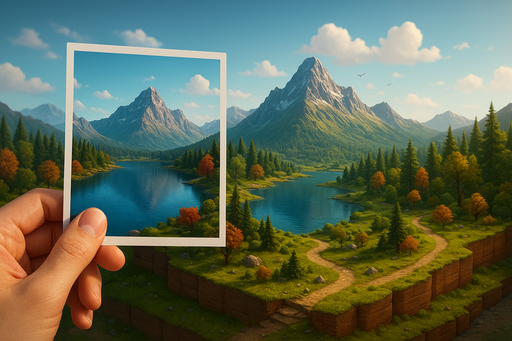Revolutionary artificial intelligence technology enables the creation of three-dimensional virtual worlds from ordinary two-dimensional photographs, opening new possibilities for virtual reality and computer graphics.

G. Ostrov
Researchers have introduced an innovative artificial intelligence model capable of converting static photographs into fully explorable three-dimensional worlds. This technology opens exciting prospects for virtual reality development, gaming industry, and architectural visualization.
How the Technology Works
The new AI model employs advanced machine learning algorithms to analyze two-dimensional images and reconstruct spatial depth. The system can determine object placement in three-dimensional space, create textures for invisible surfaces, and generate realistic environmental geometry.
The processing workflow includes several stages: first, the AI analyzes image composition and identifies key objects, then builds a depth map and creates a 3D mesh, followed by generating missing scene elements to create a comprehensive virtual space.
Capabilities and Limitations
Among the advantages of the new technology are high processing speed and impressive quality results for simple scenes. The model works particularly effectively with architectural photographs, landscapes, and interiors with clear geometry.
However, the technology has certain limitations. The system may experience difficulties processing complex scenes containing numerous small details, transparent or reflective surfaces. The quality of results also heavily depends on the quality and composition of the source photograph.
Applications Across Various Fields
The potential applications of this technology are extensive. In virtual reality, it can be used for rapid creation of VR environments from photographs of real places. The gaming industry gains a tool for accelerated creation of game locations based on concept art or references.
Architects and designers can create interactive project presentations, while educational institutions can develop virtual tours of historical sites and museum exhibitions.
Future Development
Developers plan to improve model accuracy and expand its capabilities for working with complex scenes. Plans also include integration with existing 3D modeling tools and creation of a more user-friendly interface.
This technology represents a significant step forward in computer vision and generative AI, opening new possibilities for virtual content creation.
More detailed information about the technology can be found on the official Ars Technica website.
If you have any issues, please contact us - we'll help quickly and professionally!




